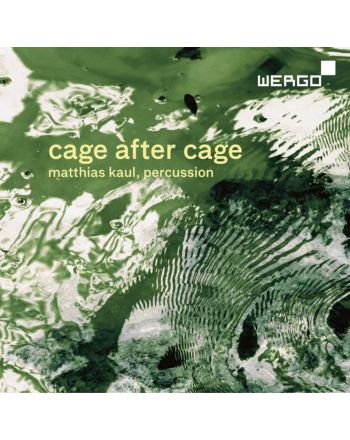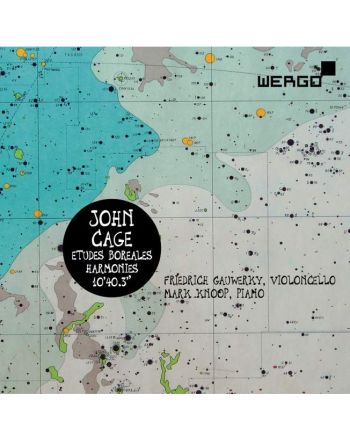Two³
Product Details
Description
“I now think that after all these years I’m finally writing beautiful music”, John Cage confessed in 1990. In that same year he had met the shō player Mayumi Miyata, who asked for a piece for the ancient Japanese mouth organ. Cage was deeply impressed by the sound of this instrument and the possibilities offered by its 17 pipes, up to six of which can be blown into simultaneously to produce single pitches as well as complex chords. However, it was not only the sound that fascinated Cage. His interest in the shō – which has a place in traditional Japanese gagaku court music – completed a circle which had begun at the end of the 1940s, when Cage first became involved with Zen Buddhism and Asian philosophy.
In 1991 Cage wrote “Two3” for shō and five water-filled conch shells, one of his so-called “Number Pieces” Cage worked on during the last years of his life. In the titles of the “Number pieces” the first number indicates how many musicians or instruments are to be used, while the raised number indicates a piece’s chronological position in the sequence of all the Number Pieces written for this particular number of players. The individual parts are notated separately and contain a sequence of sounds whose duration is organized according to what Cage called time brackets.
“Two3” is characterized by fluid motion, as well as by the gradual transformation of an ebbing and flowing band of sound interrupted by phases of silence, out of which isolated sounds emerge like calls in the desert or secret signs of agreement. Although the sound of the piece’s structure remains a mystery to rational thinking, it is directly accessible to sensory awareness – especially in the interpretation here by the accordion player Stefan Hussong and the sheng virtuoso Wu Wei, which is already noteworthy by virtue of the instruments involved. For one thing, Wu Wei plays, instead of the Japanese shō, the sheng (the Chinese mouth organ), which is among the oldest of all instruments with a history going back 3000 years. For another thing, in addition to the prescribed conch shells, there is also the accordion: In their interpretation of “Two3” Hussong and Wei reflect on the similarities of sound between the sheng and the accordion. On the one hand, they emphasize the specific characteristics of each instrument, while on the other hand they strive to merge the instruments’ rich and delicate overtone spectra.
co-production: Deutschlandradio





